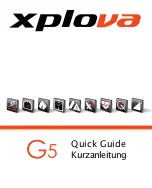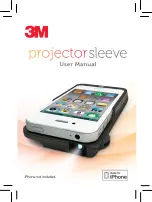
INSTRUCTION MANUAL
8
•
When sticking the sensor into a solid sample, take care not to apply any bending or twisting force to the sensor. This may
cause malfunction.
•
Do not use organic solvents for cleaning. The sensor materials include resins, including ABS resin, epoxy resin, and
polyethylene resin.
•
ISFET is a semiconductor sensor. It may be damaged by static electricity. Do not touch the
sensing part and sensor terminal.
•
Do not immerse the part upper than 70 mm from the tip of the sensor into a sample, since
it may malfunction or break down.
•
Do not allow the electrode connector and sensor terminal to come in contact with water or
wet hands.
•
Store the product in dry conditions. Storage area should be kept away from high tempera-
ture, high humidity, and direct sunlight.
•
For the first use, or use after a long interval (one week or longer), immerse the sensor tip
in 3.33 mol/L KCl solution (300) for 30 minutes or longer before use.
•
Make sure to use the electrode at a temperature within the specified usable range (sensor:
0
C to 60
C, converter: 0
C to 40
C).
•
The product should not be subject to rapid temperature change.
•
ISFET is a semiconductor sensor. Exposing the sensor to direct sunlight or strong light will cause the error of measured
value.
•
Dirt on the sensing part or liquid junction will affect accuracy adversely. Keep the sensor clean referring to "
•
The life of the sensor may be shortened if it is continuously immersed in a sample for a long time (for example, the life of the
sensor is about 200 hours at 25
C).
•
The sensor is a consumable. If it is damaged or deteriorated, replace a new sensor. (The sensor cannot be repaired.)
•
Before replacing the sensor or batteries, turn off the power and wipe water off the electrode by patting the electrode dry with
filter paper.
•
Make sure to detach the sensor before battery replacement. Failure to comply may cause malfunction.
•
If the Low Batt. LED blinks, the battery voltage has been low. In this case, replace the batteries as soon as possible.
When the Meas. LED is turned off, electrode performance is not guaranteed.
•
White powder or solution may be generated at the liquid junction. This is leaked internal solution of the reference electrode,
and not a symptom of trouble. Rinse the sensor with ion-exchange water before use.
•
The battery life is about 500 hours for continuous measurement. The attached batteries may be shorter in life than new ones.
■
Battery management
•
Misusing batteries may cause an internal solution leak or a damage of the batteries. Follow the instruction below.
- CR2032 batteries are not rechargeable.
- Remove the batteries from the converter before prolonged nonuse.
- If the battery solution leaks, wipe away the spilled solution from the battery case before replacing the batteries.
•
For child’s safety, keep batteries away from children. If your child does swallow a battery, take him or her to the emergency
room immediately.
•
Do not throw batteries into fire.
2.
Specifications and Components
■
Packaged contents
■
Components
■
Specifications
Electrode model: 0030-10D
Sensor model: 0131
Do not immerse
70
mm
Sensor terminal
Sensing part
•
Sensor (0131): 1
•
Converter: 1
•
Battery CR2032: 2
•
3.33 mol/L KCl solution (300): 1
•
Instruction manual (this book): 1
•
Screw driver: 1
●
Sensor (0131)
●
Converter
O-ring
Sensor terminal
Sensing part
Liquid junction
End cap
Power switch
Nut
Meas. LED
Converter cover
Low Batt. LED
Electrode connector
Connector cover
Temperature connector
(Side)
Zero adjustment volume
Cable






























